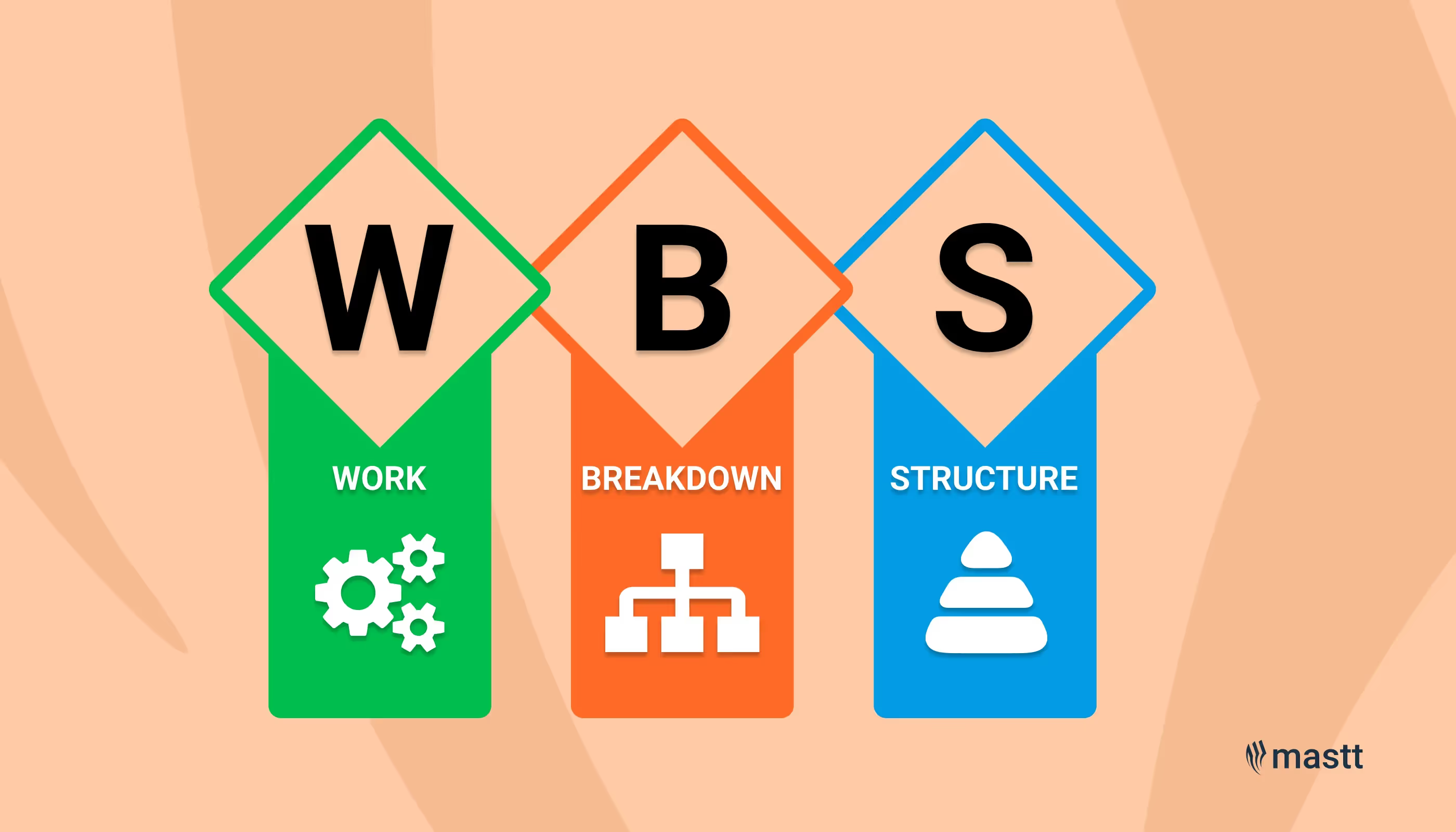In construction project management, success often hinges on how well teams can plan, organize, and manage the project’s many moving parts. A Work Breakdown Structure (WBS) is one of the most valuable tools in a project manager’s toolkit for achieving this. This structured approach breaks down complex projects into smaller, manageable tasks, providing a clear map of what needs to be done to deliver a project on time and within budget.
This in-depth guide will take you through the meaning of WBS, its purpose, benefits, steps to create one, and how to integrate it with other project management tools. Whether you're a project manager aiming to refine your processes or a construction professional seeking clarity on WBS meaning and applications, this guide provides the insight you need to leverage the WBS to its fullest potential.
What is a Work Breakdown Structure?
A Work Breakdown Structure (WBS) is a visual, hierarchical breakdown of a project, dividing it into smaller, more manageable parts. This tool helps project managers visualize all tasks, resources, and timelines required to reach project goals.
In construction, a WBS in project management is deliverable-oriented, meaning it’s structured around the final outputs of the project. Each level of the WBS narrows down the project scope, from broad project phases down to specific tasks. By doing so, the WBS clarifies the path to project completion and ensures that all team members understand their responsibilities. This framework serves as the foundation for planning, executing, and controlling every aspect of a project.
For example, consider a high-rise building project. The WBS might start at the top level with broad categories like Site Preparation, Foundation Work, Structure Erection, and Finishing Work. Each of these categories is further broken down, ensuring each task is accounted for—from excavation and concrete pouring to electrical wiring and final inspections.
A robust WBS in project management integrates three key elements:
- Scope: Defines the extent of work required for the project.
- Cost: Assists in creating a budget that aligns with project goals.
- Deliverables: Tracks the outputs required for each project phase.
These elements allow the WBS to serve as a dynamic blueprint that can evolve as the project progresses. For more on building a cohesive strategy in project scheduling, explore our resources, which cover essential tools and techniques for effective project execution.

Why Use a Work Breakdown Structure?
A WBS offers multiple benefits that enhance project efficiency, communication, and control. Here’s how it elevates project management in construction:
- Improves Communication with Stakeholders: The WBS creates a transparent view of all project tasks and deliverables, allowing stakeholders to track progress easily. By clearly defining each component, it becomes easier to address stakeholder questions about timelines, budgets, and task completion.
- Enables More Accurate Project Estimates: Breaking the project into smaller parts allows for more precise time, cost, and resource estimations. In construction, where labor and materials represent significant costs, these accurate estimates help prevent budget overruns and schedule delays.
- Tracks Milestones and Project Completion: The WBS enables project managers to monitor progress toward specific milestones, such as reaching a structural completion phase or passing a critical inspection. By tracking these markers, teams stay on target for major deadlines.
- Improves Budget Control and Resource Allocation: With a comprehensive WBS, project budgets can be broken down and allocated to each phase or task. For instance, a clear allocation of resources for the Foundation Work phase ensures that funds are available when needed, preventing delays and optimizing cash flow.
- Scope Definition and Task Visualization: A WBS is a visual roadmap that helps everyone understand what tasks need to be completed and their sequence. With this clarity, team members understand both the project’s overall scope and their specific roles.
Using a WBS doesn’t just improve efficiency—it enables proactive project management by allowing project leaders to foresee potential roadblocks, allocate resources precisely, and make informed decisions.
Steps to Create an Effective Work Breakdown Structure
Constructing an effective WBS requires careful planning. Here’s a step-by-step approach:
Define the Project Scope and Goals
Start by determining the entire scope of the project. Consider questions like, "What are the primary objectives?" and "What deliverables are expected?" Establishing a clear scope is vital for controlling the project and avoiding scope creep, which can disrupt timelines and budgets.
Identify Major Deliverables and Project Phases
Break the project down into main deliverables. In construction, these might include Excavation, Foundation, Framing, HVAC Installation, and Finishing. Each of these phases represents a significant component of the project.
Organize Tasks into a Hierarchical Structure
Once the deliverables are clear, break them down into specific tasks and subtasks. For example, Foundation Work might include soil testing, excavation, and concrete pouring. Arrange these tasks hierarchically, starting with the main phases and breaking them down into individual steps.
Set WBS Levels and Control Accounts
WBS levels help structure the project logically. Higher levels represent broader project phases, while lower levels detail specific tasks. Control accounts serve as checkpoints where progress and budgets can be monitored for particular sections. In a large construction project, each floor or area might have its own control account for tracking purposes.
Define Work Packages and Assign Task Owners
Work packages represent the smallest units of work in the WBS, grouping tasks that can be assigned to a specific team or subcontractor. Each package should have a clearly assigned owner, ensuring accountability and clarity.
Review and Validate the WBS
Finally, review the WBS with stakeholders and team members. Confirm that every deliverable, task, and responsibility is accounted for, and make adjustments if needed.
Building a WBS is an iterative process. As the project progresses, updates may be necessary to address unforeseen issues or scope adjustments.
Key Components of a Work Breakdown Structure
A robust WBS in project management has several critical components that help define and control the project:
- Deliverables: Represent the primary outcomes or products of the project, such as a finished structure or completed infrastructure.
- Work Packages: The smallest units of work that can be assigned and managed. Each work package should include detailed tasks, budgets, and timelines.
- Tasks: Individual actions required to complete a work package. Each task should be specific, measurable, and directly contribute to the project’s goals.
- Control Accounts: These are summary-level control points where budgets and schedules are managed. In construction, each control account might represent a major section or phase of the project.
Additionally, a WBS Dictionary can accompany the structure, providing detailed descriptions of each component to ensure everyone understands what each task entails. Having this document on hand is essential to communicate WBS meaning to all team members and stakeholders clearly.
Best Practices for a Strong Work Breakdown Structure
A well-crafted Work Breakdown Structure (WBS) is essential for effective construction project management. Here are some practical tips to keep in mind:
- Keep It Clear and Simple: Don’t over-complicate things. Aim for a straightforward, logical structure that’s easy for everyone to understand.
- Use a Hierarchical Layout: Arrange tasks in a top-down format so it’s clear where each piece fits within the bigger picture.
- Break Tasks Down: Make sure each task is small enough to be manageable but still meaningful within the project.
- Update Regularly: Construction projects evolve over time, so keep your WBS current to reflect any changes.
- Identify Milestones and Phases: A WBS is perfect for setting out project milestones and defining each project phase, making it easy to track progress.
To make creating your WBS even easier, you can use Mastt’s free Work Breakdown Structure Template. It’s designed to help you break down tasks, deliverables, and milestones into manageable components, bringing more clarity and efficiency to your project.
Common WBS Mistakes to Avoid
Some common mistakes can undermine the effectiveness of your WBS:
- Omitting Key Components: Ensure all aspects of the project are represented. Missing components can lead to budget issues and delays.
- Vague Task Descriptions: Each task should have a specific, measurable description to avoid confusion and ensure clear expectations.
- Failure to Update the WBS: If the WBS isn’t kept up to date, it loses its value as a management tool. Regular reviews are essential.
- Overly Complex Structure: A WBS that’s too detailed can become unwieldy. Aim for a balance between detail and usability.
Avoiding these errors helps maintain the integrity and usability of the WBS, keeping the meaning of WBS clear for everyone involved.
Integrating WBS with Other Project Management Tools
The WBS is often most effective when integrated with other project management tools, such as:
- Gantt Charts: These charts visually represent the project timeline and help track task completion against the WBS structure.
- Scope of Work (SOW): The WBS helps define the SOW, detailing each task and deliverable for greater clarity.
- Statement of Work and Work Orders: Use the WBS to generate precise work orders and statements of work, ensuring every detail is covered for each contractor or team.
Building Success with a WBS
A Work Breakdown Structure (WBS) is a powerful tool that can dramatically enhance project management in construction. By defining the scope, tracking deliverables, and organizing tasks into manageable units, a WBS in project management enables project managers to maintain control over complex projects. With a clear WBS, you can improve communication, set realistic budgets, and ensure that all team members understand their roles and responsibilities.
By following best practices, using appropriate tools, and avoiding common mistakes, construction project managers can use the WBS to keep projects on schedule, within budget, and on target for success. As a roadmap that guides every step of the construction process, the WBS is essential for delivering high-quality results on time, every time.
Ready to take your project management to the next level? Discover more insights, tools, and resources at Mastt to streamline your construction projects and achieve greater efficiency with expert guidance.






.avif)
%2520in%2520Construction%2520Project%2520Management%2520(1).avif)





.avif)


